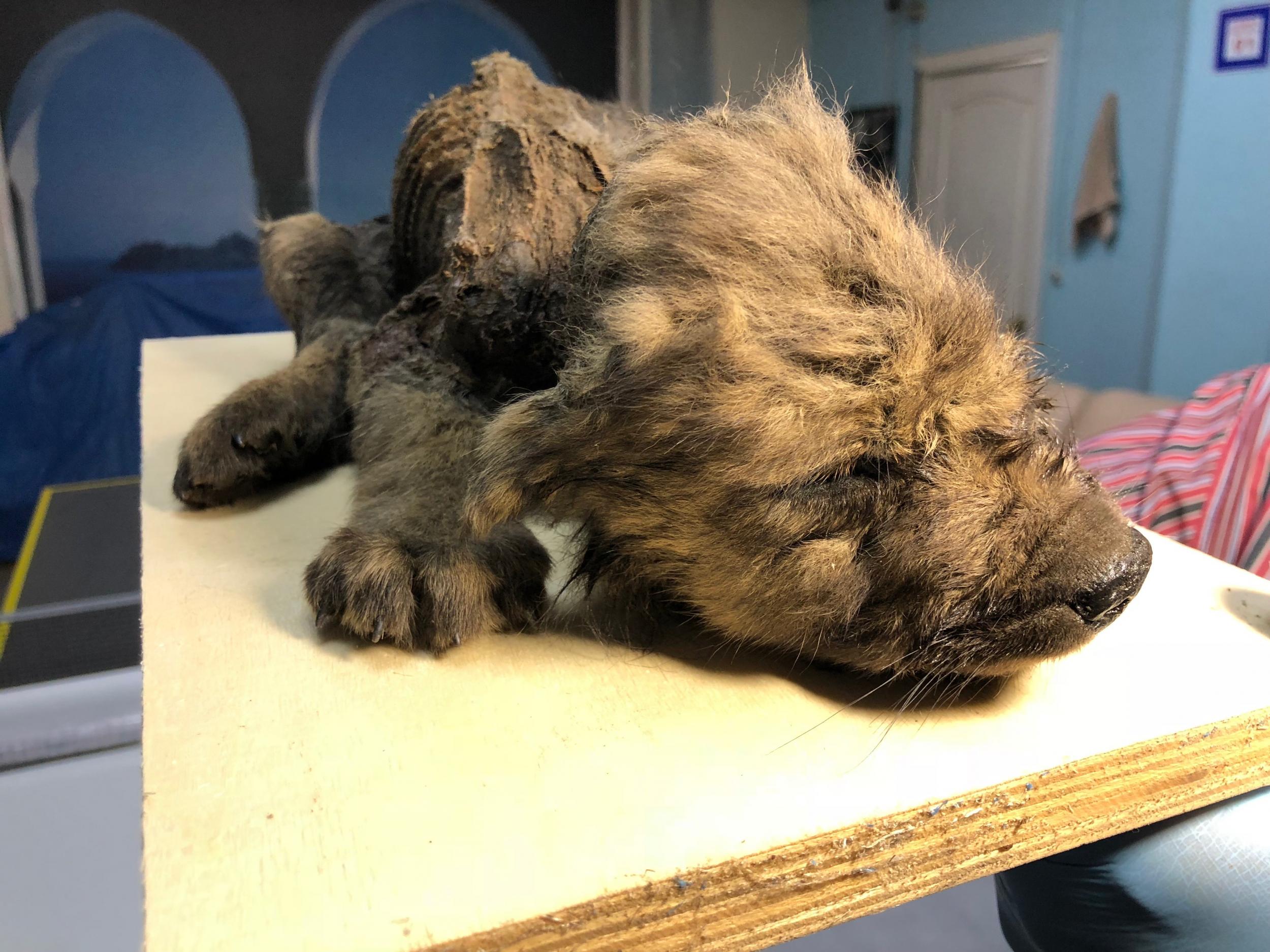18,000-year old puppy found perfectly intact in Siberian permafrost
Researchers named it 'Drogo' which means 'wolf or dog'

Your support helps us to tell the story
From reproductive rights to climate change to Big Tech, The Independent is on the ground when the story is developing. Whether it's investigating the financials of Elon Musk's pro-Trump PAC or producing our latest documentary, 'The A Word', which shines a light on the American women fighting for reproductive rights, we know how important it is to parse out the facts from the messaging.
At such a critical moment in US history, we need reporters on the ground. Your donation allows us to keep sending journalists to speak to both sides of the story.
The Independent is trusted by Americans across the entire political spectrum. And unlike many other quality news outlets, we choose not to lock Americans out of our reporting and analysis with paywalls. We believe quality journalism should be available to everyone, paid for by those who can afford it.
Your support makes all the difference.An ancient puppy has been discovered completely frozen and perfectly preserved in Siberian permafrost, researchers say.
The specimen was carbon dated and found to be 18,000 years old, but looks and feels like a “very recently dead animal”.
Researchers in Stockholm found the puppy in summer 2018 in a remote part of northeast Siberia, about two hours from the nearest town of Belaya Gora.
The male puppy appears to have been just two months old when it died, and lay undisturbed in permafrost until last year, reported the Siberian Times.
The specimen remains in Russia, but researchers Love Dalen and Dace Stanton, 34, brought its rib back to Sweden to study.
It is not known if the “amazingly well-preserved” specimen is a wolf or a dog, or a product of the evolutionary transition from wolves to domesticated dogs.
Dalen, a professor of evolutionary genetics, said: “I had assumed that what we’d find was that this was a wolf. But we recently got our first round of results on the genome and we can’t say if it’s a dog or a wolf. We should be able to – it should be easy.
“So this could be a very early modern wolf or very early dog, or a late Pleistocene (Ice Age) wolf,” he added. “If it turns out to be a dog I would say it is the earliest confirmed dog.”
Samples from the puppy were sent to the Swedish Centre for Palaeogenetics, which has the largest DNA bank of canines from around the world, but they were still not able to determine its species.
The puppy, affectionately named Drogo, has milk teeth, thick fur, claws, and even eyelashes intact.
The only sign of significant decomposition was a part of the spine that had been exposed, baring its ribs.
Further analysis and genome sequencing will be carried out to find out where to place Drogo on the canine evolutionary scale.
Join our commenting forum
Join thought-provoking conversations, follow other Independent readers and see their replies
Comments